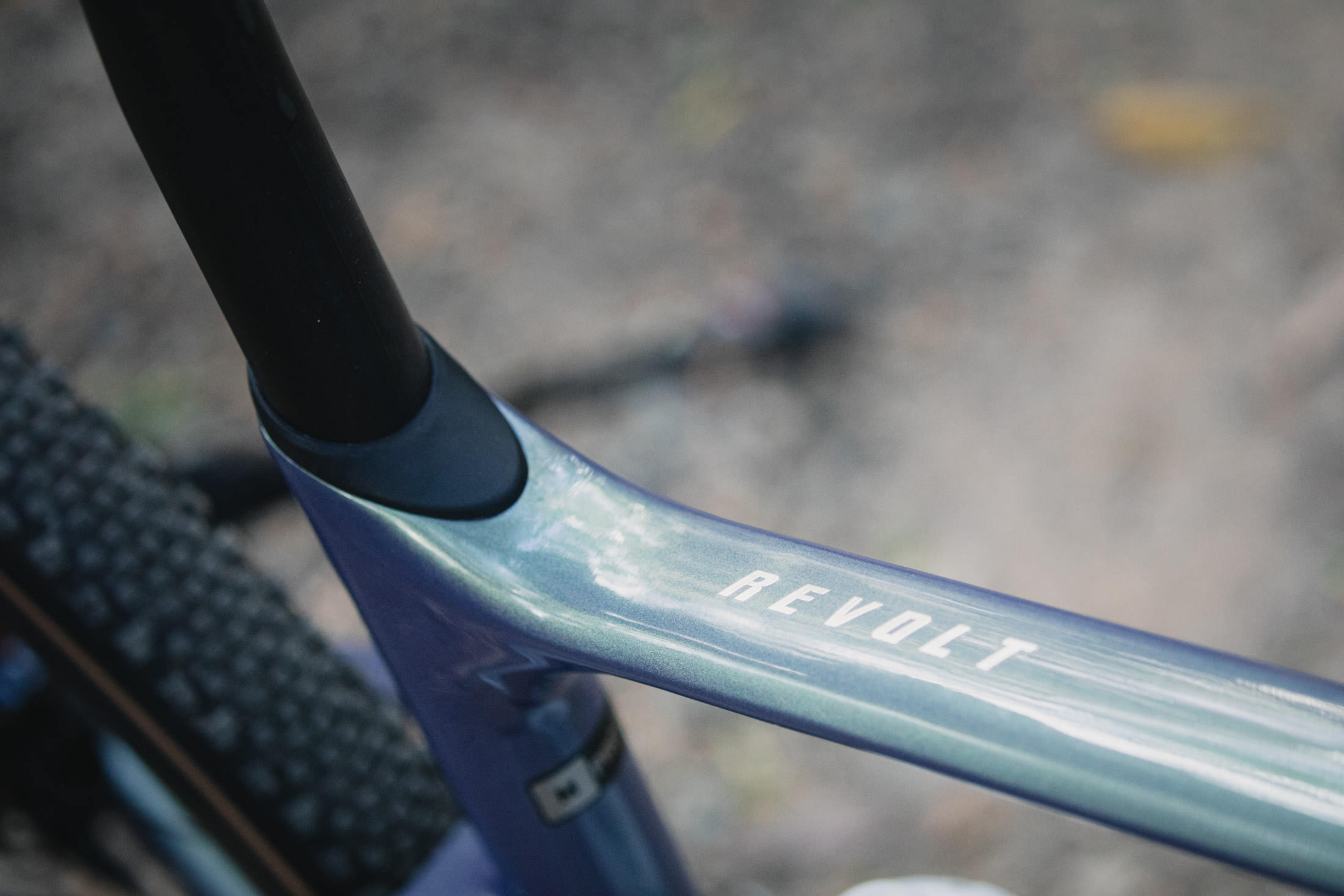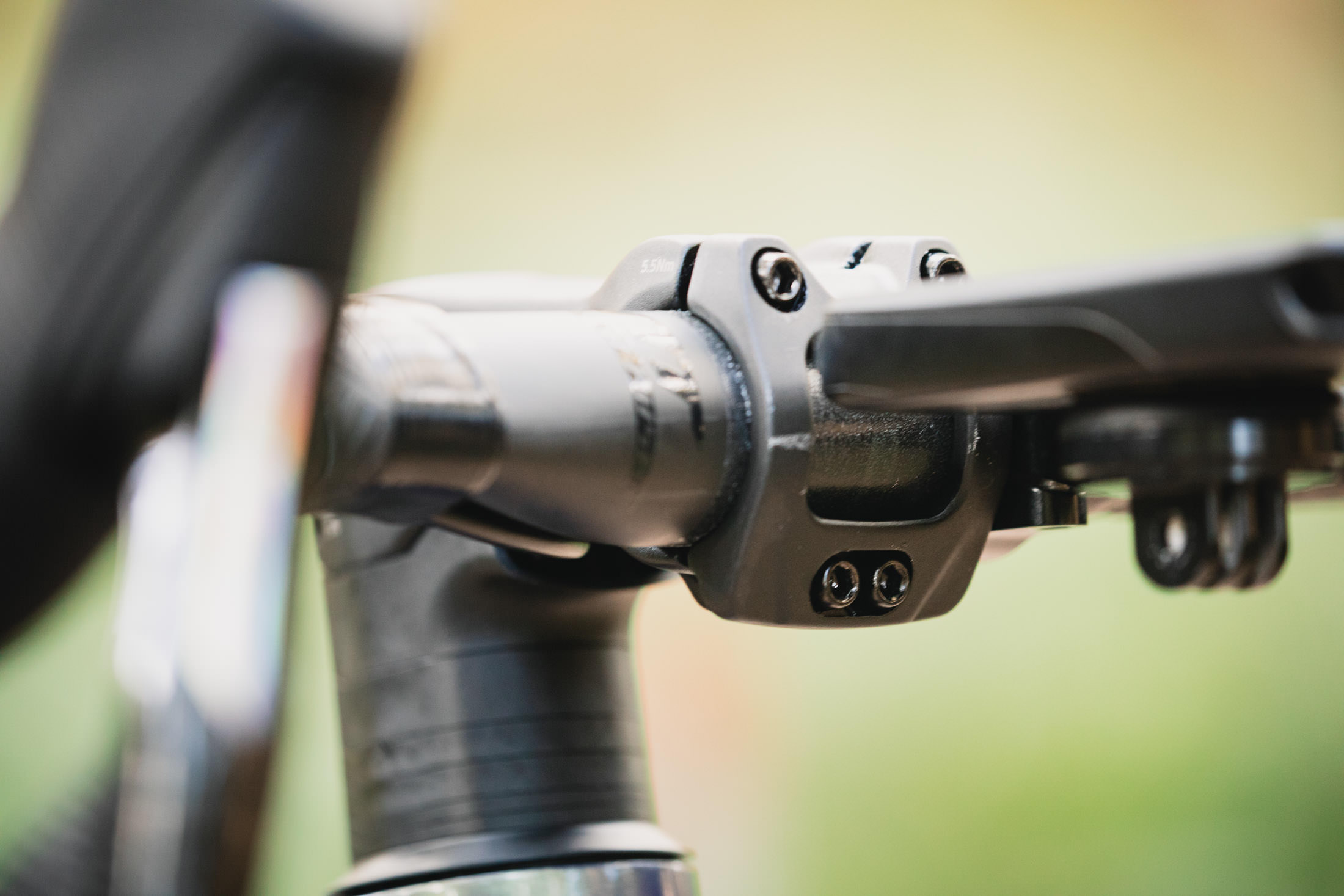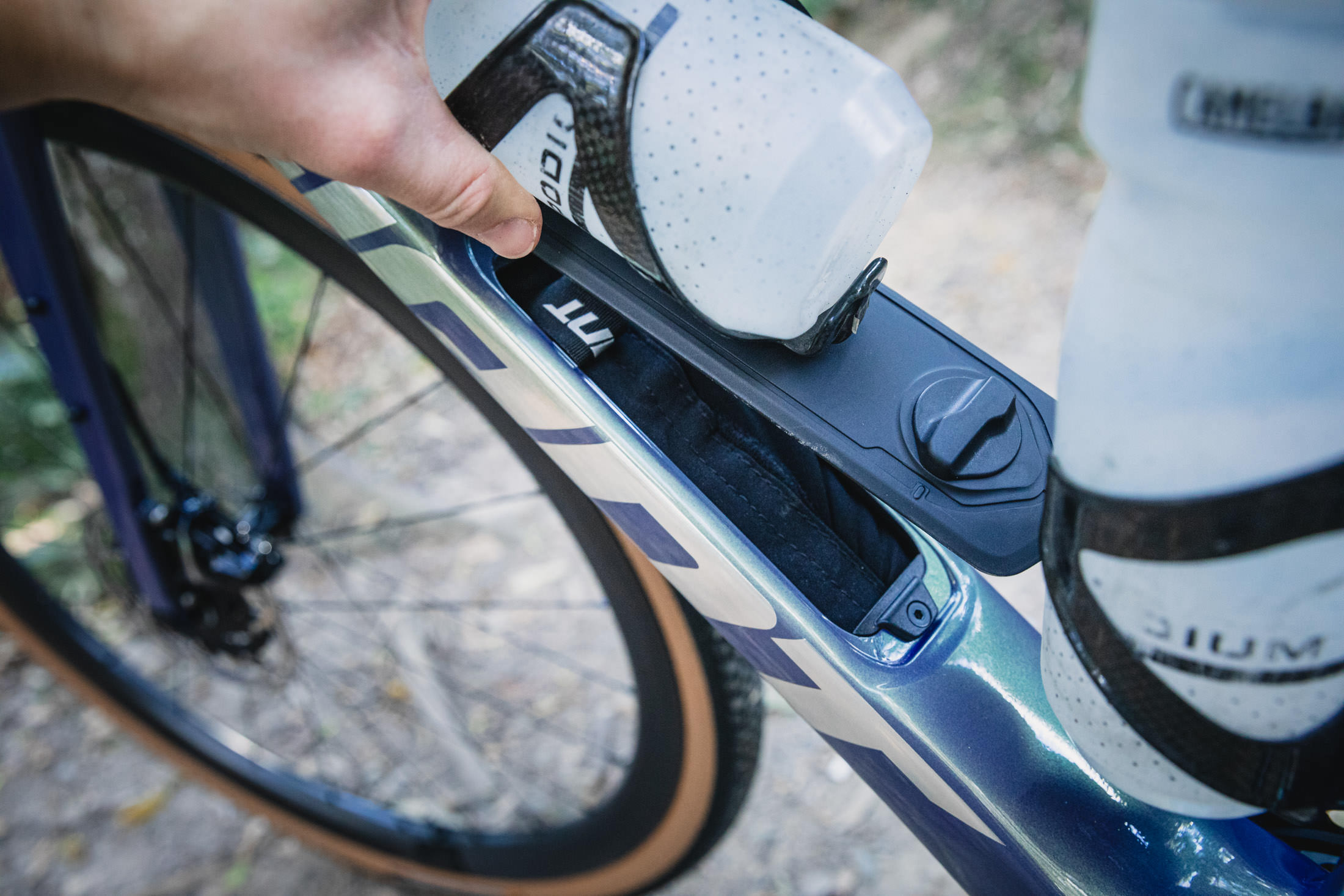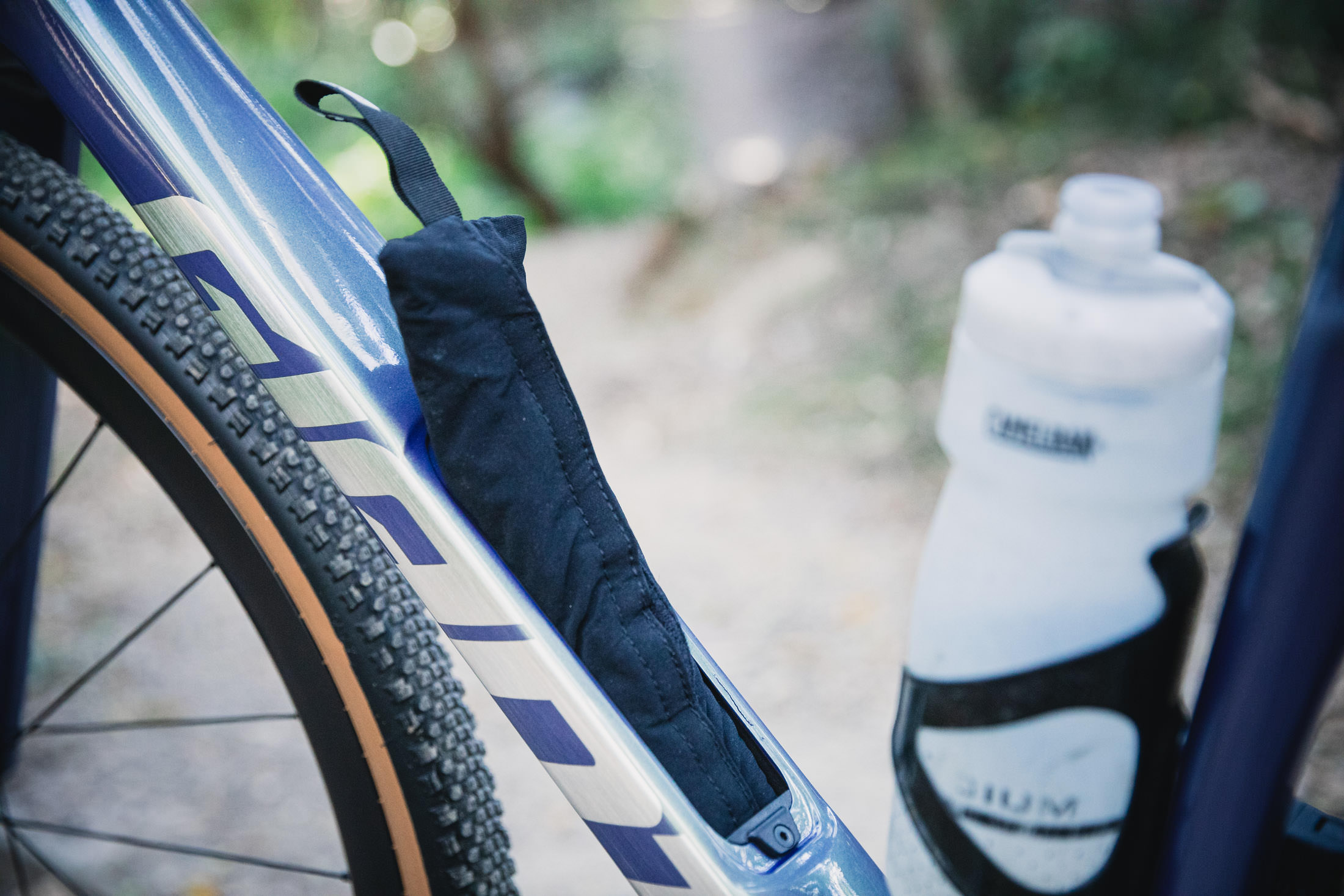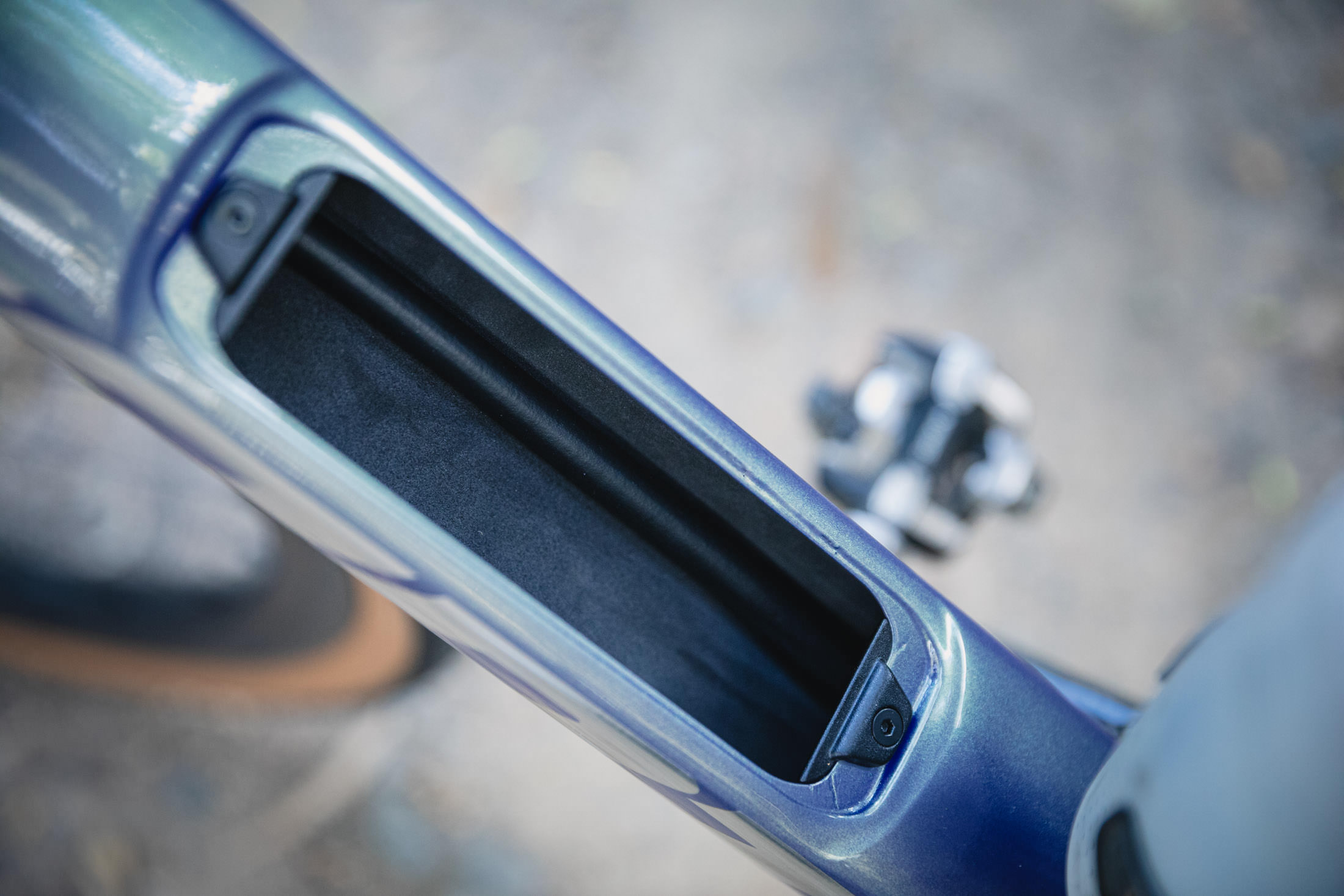Giant’s latest generation Revolt gravel bike broke cover last month when local legend Brendan ‘Trekky’ Johnston and Cole Patton took on Unbound Gravel on a prototype version of the bike.
That same bike just won a sack of potatoes and a green and gold jersey at the Devil’s Cardigan, which doubled as the Gravl National Champs a few weekends ago, with Trekky putting in a dominant performance. According to Giant, Trekky played a role in the development and testing of this new bike.
Related:
- Racing Garmin Unbound 200 | They say you shouldn’t meet your hero
- Gravel Roos | The trio of Aussies taking on the Life Time Grand Prix
- REVIEW | The new Liv Devote is a stupendously smooth gravel flyer

First launched in 2015, the new Revolt still borrows some design cues from its predecessors. However, it’s evolved into a full-on gravel racer, with the more aggressive Revolt X slotting in as the adventure machine.
We have just received a fourth-generation Revolt Advanced Pro 0 at Flow’s Queensland HQ. Let’s dive into what’s new.

An overview of the 2025 Giant Revolt
The Giant Revolt is the brand’s gravel race bike, slotting into similar footing as the Cervelo Aspero, Canyon Grail, and Scott Addict Gravel.
For 2025, the Revolt has received a revamp with an all-new carbon frame and fork. The silhouette of the frame is similar with its dropped seat stays and sloping top tube, and a press-fit bottom bracket.

The new bike is definitely what we’d class as an evolution rather than a revolution. The geometry is mostly unchanged, with the only difference being the chainstays, which are 5mm shorter, and, of course, the wheelbase. The previous generation of the Revolt rode very well as a gravel racer, so it’s not totally surprising that Giant has opted for the ‘don’t-fix-it-if-it-ain’t-broke’ mentality.
Our size medium Advance Pro 0 tipped the FlowScalesOfTruth™ at 8.23kg without pedals or bottle cages.

Everything on the inside — for better or worse
Where the significant differences do come are in the frame furnishings. Starting at the front, Giant has opted to run the cables through the upper headset bearing. While the Taiwanese brand claims an aerodynamic advantage — which independent testing shows is real — and less clutter it’s a bit less of an inconvenience on the models with electronic shifting, but for the mechanical models, changing that headset bearing or cables and housing will be a big job.

It’s not all doom and gloom, as Giant has also added integrated downtube storage. A tool-free hatch sits beneath the front bottle cage bosses, and Giant includes a tool bag to keep everything organised.
Despite its pitch as a race bike, Giant has also brought forward a plethora of mounts and bosses across the frame, including the three-pack bolts on both fork legs and provisions for full-coverage fenders. Some gravel bikes in this category, like the new Cervelo Aspero and Specialized Crux, eschew the extra mounts for the sake of weight and simplicity.
Adjustable geometry is back
Giant has carried over the flip chip in the rear dropout to allow for a 5mm chainstay adjustment. This of course will enable riders to slightly modify the steering characteristics and stability of the bike depending on the nature and terrain of the ride.
Increasing the chainstay length also means you can fit a larger tyre between the stays. In the long position, Giant says the new Revolt can handle up to 53mm wide rubber, while the frame has room for 42mm tyres in the short position. Our test bike has a set of 40mm Cadex GX tyres.

The flip chip also means that the Revolt is not UDH compatible. SRAM’s new Red XPLR Transmission is one of the worst-kept secrets going, and even F1 driver Valtteri Bottas was riding it at Unbound Gravel this year, so it’s an interesting decision from the Taiwanese brand.
While the folks splashing out for a HALO flagship groupset are in the minority, we’d speculate that the hanger-free rear mech design will soon trickle down through the brand’s range.
Will the geometry adjustment on the new bike be enough of a draw to outweigh that future-proof compatibility and the ability to walk into any bike shop and get a replacement should you have a whoopsie? Only time will tell.

D-Fuse front and back
Giant has opted to use its own finishing kit for the Revolt, with each part based around the brand’s D-Fuse design language. The heart of this system is based around D-shaped tubing designed to promote flex in one plane to increase comfort without sacrificing performance.

At the back, the Revolt sees a proprietary D-Fuse seatpost said to allow for up to 12mm of fore and aft flex. Giant pioneered these square-backed seatposts back in 2014 and has since been widely adopted by many brands. However, as with the previous generation of this bike, it will also accept a 30.9mm round post, including droppers thanks to an included shim.
The D-Fuse concept has also been applied to the handlebars. Giant says it has increased the downward “pushing” compliance for a smoother ride quality while also increasing the upward “pulling” stiffness, aiming to increase precision and control compared to its own round Contact bars.

2025 Giant Revolt models and pricing
While there are both alloy and carbon models of the Revolt, only the carbon version has received the frame updates. The metal bike only gets new paint for the coming year.
Giant Australia has advised that it will be bringing in five models of the Revolt, with prices running from $3,199 AUD up to $8,499 AUD for the Advanced Pro 0 we have for the test.
2025 Revolt Advanced Pro 0

- Frame | Revolt Advanced-grade composite
- Fork | Advanced SL-grade composite, tapered steerer
- Wheels | Giant CXR 1 Carbon Disc WheelSystem, 35mm deep
- Tyres | CADEX GX, 700x40c, tubeless
- Drivetrain | SRAM Force eTap AXS, 2×12 43/36T Crankset, Force 36-10T Cassette
- Brakes | SRAM Force, 160mm Rotor Front and Rear
- Bar | Giant Contact SLR XR D-Fuse
- Stem | Giant Contact AeroLight, -10 degree
- Seatpost | Giant D-Fuse SLR, composite, -5/+15mm offset
- RRP | $8,499
2025 Revolt Advanced 0

- Frame | Revolt Advanced-grade composite
- Fork | Advanced-grade composite, tapered steerer
- Wheels | Giant CXR 2 Carbon Disc WheelSystem, 35mm deep
- Tyres | CADEX GX, 700x40c, tubeless
- Drivetrain | Shimano GRX RX-820 hydraulic, 2×12 48/31T Crankset, HG710 36-11T Cassette
- Brakes | Shimano GRX RX-820 hydraulic, 160mm Rotor Front and Rear
- Bar | Giant Contact XR D-Fuse
- Stem | Giant Contact AeroLight, -10 degree
- Seatpost | Giant D-Fuse SLR, composite, -5/+15mm offset
- RRP |$5,199
2025 Revolt Advanced 1

- Frame | Revolt Advanced-grade composite
- Fork | Advanced-grade composite, tapered steerer
- Wheels | Giant P-X2 Disc
- Tyres | Giant Crosscut Grip, 700x45c, tubeless
- Drivetrain | SRAM Apex XPLR, 1×12 40T Crankset, PG-1231 44-11T Cassette
- Brakes | Shimano GRX RX-820 hydraulic, Giant MPH Rotors 160mm Front and Rear
- Bar | Giant Contact XR D-Fuse
- Stem | Giant Contact AeroLight, -10 degree
- Seatpost | Giant Contact Switch, dropper, 30.9mm
- RRP |$4,199
2025 Revolt Advanced 2

- Frame | Revolt Advanced-grade composite
- Fork | Advanced-grade composite, tapered steerer
- Wheels | Giant P-X2 Disc
- Tyres | Giant Crosscut Grip, 700x45c, tubeless
- Drivetrain | Shimano GRX RX-610, 2×12 FSA Omega Modular AGX+ 48/32T Crankset, HG710 36-11T Cassette
- Brakes | Shimano GRX RX-410, Giant MPH Rotors 160mm Front and Rear
- Bar | Giant Contact XR D-Fuse
- Stem | Giant Contact AeroLight, -10 degree
- Seatpost | Giant D-Fuse, composite, 14mm offset
- RRP |$3,699
2025 Revolt Advanced 3

- Frame | Revolt Advanced-grade composite
- Fork | Advanced-grade composite, tapered steerer
- Wheels | Giant P-X2 Disc
- Tyres | Giant Crosscut Grip, 700x45c, tubeless
- Drivetrain | Shimano GRX RX-610, 2×11 FSA Omega Modular AGX+ 46/30T Crankset, Shimano Tiagra 34-11T Cassette
- Brakes | Shimano GRX RX-40, Giant MPH Rotors 160mm Front and Rear
- Bar | Giant Contact XR D-Fuse
- Stem | Giant Contact AeroLight, -10 degree
- Seatpost | Giant D-Fuse, composite, 14mm offset
- RRP |$3,199
